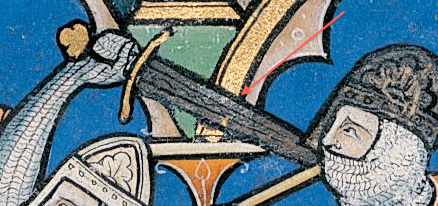I was looking at some images of the maceijowski bible (you can see the pretty much the whole thing here for free... make the images full screen and blow them up super high res), and was curious about something I saw there... In one image (attached) the sword being wielded has a distinct wavy pattern in the middle. Is this pattern-welding/damascus being used in the 13th cent? I was under the impression that this was out by this time period.
Thoughts?
Thnx
Z
